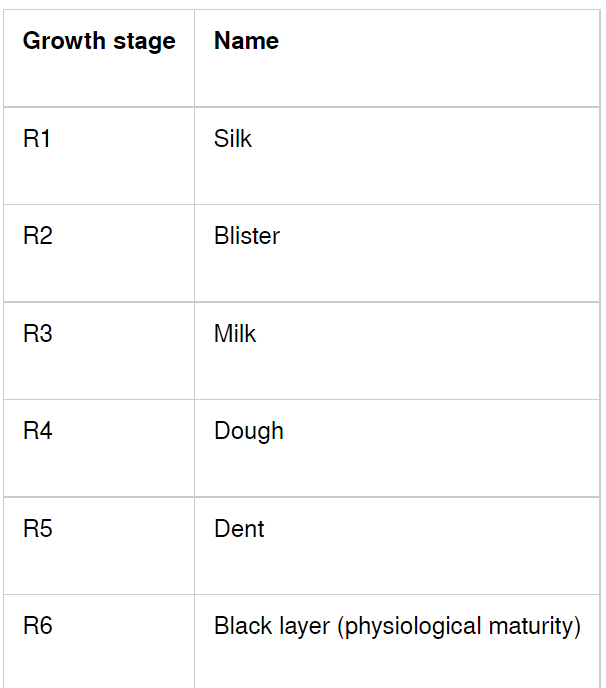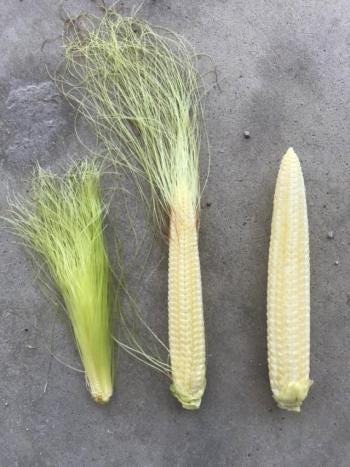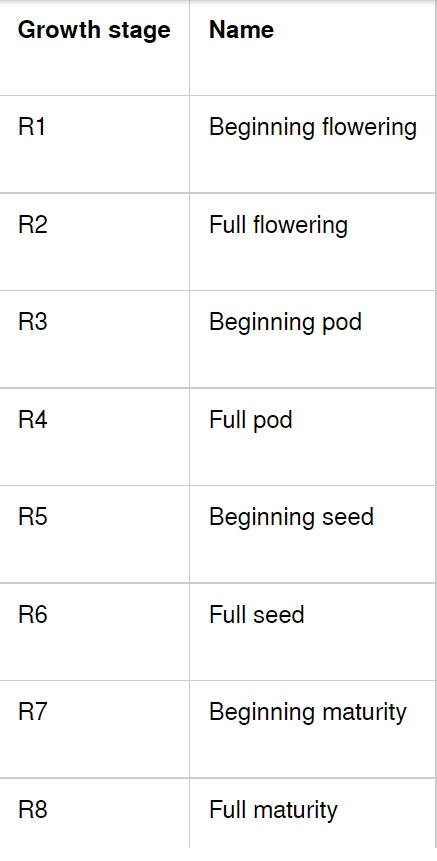July 28, 2022

While crop development is behind this year due to the late planting, warm weather in the forecast will result in faster development than we prefer during reproductive growth stages of our crops. Appropriate identification of reproductive growth stages can be important for numerous reasons like timing fungicide and insecticide applications and understanding important crop development factors like water use, dry matter accumulation, and the effect of stress on the crop at various stages.
Corn reproductive stages

Stress during reproductive stages, particularly hot temperatures and lack of moisture can result in lower than expected yields. Corn is a significant user of water during late vegetative and reproductive growth stages. In corn, stress during R1 can affect success of pollination and fertilization, during R2 and R3 will primarily result in kernel abortion, and in R4 and R5 will result in reduced dry matter accumulation. Typically, fungicide applications happen during the R1, or perhaps R2. Occasionally, farmers may make herbicide applications during the R4 or R5 growth stage in an attempt to reduce viable seed production in weeds.
Check out this Encyclopedia article to see images of corn reproductive growth stages and read more about each growth stage in the Corn Growth and Development publication, available for download online.

Soybean reproductive stages


While soybeans can show the effects of drought and heat stress as readily as corn, soybean are thought of as more resilient to drought stress than corn during early reproductive stages. If better conditions return, soybeans can produce new flowers and pods. A similar sentiment applies to some other stresses, like hail, during these stages. During later reproductive stages, soybeans are less able to recover and pod number, seeds per pod, and seed size may be affected; from R4 to early R6, soybeans are most susceptible to stresses. Most fungicide applications are applied during the R3 stage, which is fast approaching for most soybean fields in Iowa. Check out this webpage for images of various soybean reproductive stages and read more about each stage in the Soybean Growth and Development publication.
I’m hopeful for some rainfall to reduce the concern over drought and heat stress during reproductive stages this growing season, but for now, we can keep an eye on crop development and have a better understanding of the importance of corn and soybean reproductive stages.
Source: Iowa State University, which is solely responsible for the information provided and is wholly owned by the source. Informa Business Media and all its subsidiaries are not responsible for any of the content contained in this information asset.
Read more about:
Crop ConditionsAbout the Author(s)
You May Also Like






